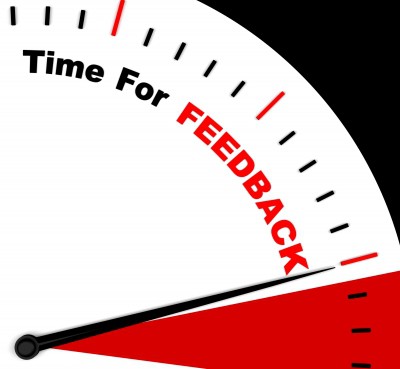“Effective performance management is not about executing the annual review cycle, its about the modifications, adjustments and course corrections day in and day out that keep the organization headed in the right direction.” (Aberdeen report – The Performance Engagement Equation, 2012)
Read our blog post Total Reward #10- recognition that discusses the positive praise also called recognition, so this article will focus on the corrective feedback.
Many managers I work with have yet to reach a rhythm and style for terrific, effective, ongoing feedback with their direct reports. They seem to lack the comfort level with correcting performance gaps, and do take the time to specifically recognize great performance activities and results.
Lesson to be learned—you should increase the frequency you recognize good performance so that when you give your employees corrective feedback it is better received (and more likely to be acted on).
A classic study on teams (Marcial Losada, 1999) found that the best performing teams had a ratio of 6 positive comments to one negative, and the lowest high performing teams had a ratio of positive to negative statements of 3:1. (Psychology geeks like me love the remarkable finding—too much praise without constructive improvement is counterproductive — some of the worst performing teams had an 11:1 ratio of positive to negative.) Apparently in marriage the ratio is closer to 20 to 1 (I kid you not, I recently interviewed marriage counselors at a client and there is research to back this statement up).
One way to improve an employee’s acceptance of performance enhancing communication is to make this a planned update session. No one likes to be “called to the principal’s office” or hear “Lucy, you have some ‘splaining to do.”
When managers held informal monthly employee performance update meetings, organizations were much more likely to achieve their goals (56% versus 47%) and have engaged employees (47% versus 36%, Aberdeen report).
If you have a scheduled weekly update (even a 5 minute one) every week with your boss and a monthly review of priorities and goals, how would this change your perceptions of the communication (and pre-meeting anxiety level)? During this time your supervisor can review specific performance against what I call “de-personalized” measurements and then discuss tactical changes to improve.
For example, my goal this month was to write 10 blog posts and meet with 10 prospects. I wrote 13 blogs but only had 7 prospect meetings, so we can discuss what resources and changes in my work flow would assist my achievement of 10/10 next month. Do I feel picked on, perhaps (depending on the coaching ability of my boss), but the expectations are clear and objective and so are my performance results.
Image courtesy of Stuart Miles at FreeDigitalPhotos.net




